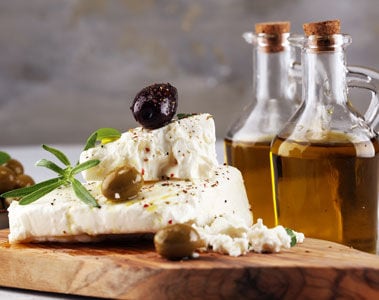
-
English
- EMEA, Americas & APAC
- China
- Latin America
Hans Brandsma, Senior Managing Scientist of Cheese Cultures at DSM-Firmenich, smiles as he recalls the feedback on his latest research. He was at the IDF Cheese Science & Technology Symposium in Bergen, Norway, from June 4-6, to present the findings of research conducted by DSM-Firmenich in collaboration with Wageningen University & Research, Food Microbiology.
Hans had the same reaction about one year ago, when he and his team tested the conventional wisdom of flavor development during cheese ripening. For the last two decades, cheese experts have believed that the presence of glutamate dehydrogenase, an enzyme present in some Lactococcus cultures, stimulates the production of volatile flavor compounds in cheese.
The new findings did not support this theory. Instead, they found an existing, much simpler route to accelerate flavor development in cheese.
Slice into a young gouda cheese, and the first thing you’ll notice is the freshness and butter. Pop it in your mouth, and the flavor profile gives way to a complex aroma, which become richer during cheese ripening.. This flavor experience depends to a large extend on volatile flavor compounds.
These volatile compounds are produced by biochemical processes that take place during ripening, thanks to microorganisms such as Lactococcus cultures, which Hans calls the “flavor factories.”
Scientists have studied these flavor factories and the conditions they need to be their most productive already for years. Until now, it was believed that Lactococcus strains benefit from glutamate dehydrogenase to stimulate volatile flavor compound production.
That was until Hans and his colleagues took a closer look at the process by which amino acids are broken down into volatile flavor compounds and came to a different conclusion. They learned that one of the breakdown products of sugar, called pyruvate, stimulates the first step in this process called amino acid catabolism.
Everyone knew this compound, pyruvate, was being produced during cheese manufacturing or milk acidification. What they didn’t yet see was the interaction between the formation of pyruvate and amino acid catabolism leading to the production of volatile flavor compounds.
Translation: The glutamate dehydrogenase enzyme isn’t making much difference in the development of volatile flavor compounds. Instead, the presence of an active sugar metabolism producing pyruvate does.
This insight has exciting implications for cheesemakers who are constantly looking for ways to accelerate ripening and develop signature cheese flavor profiles. With the research findings in hand, Hans and the team at dsm-firmenich are already implementing these findings to develop new starter cultures for customers.
Instead of looking for ways to develop starter cultures with glutamate dehydrogenase—a rather complicated task—they can look for simpler solutions. Those solutions might involve the optimization of the interaction between the cheese manufacturing process and starter cultures.
The ability to make this breakthrough is thanks to the comprehensive R&D toolkit at dsm-firmenich. This includes a thorough understanding of the research taking place around the world, an impressive culture strain library that has been built up over more than 150 years, as well as the cutting-edge equipment necessary to run experiments. It also includes a well-rounded team of technical experts, and collaboration across functions.
All these capabilities are essential for stimulating scientific discovery and developing new cheese insights and concepts. This is evident in the development of the dsm-firmenich Flavor Wheel™, for instance, which gives cheesemakers a roadmap to produce their own distinctive signature cheese flavors.
Hans has been working as a microbiologist at dsm-firmenich for more than 25 years. His time in the field, plus the dedication of dsm-firmenich to innovation in cheese flavor development, has allowed him and his colleagues to continually explore different perspectives.
“I’ve already been in this field a long time,” says Hans. “You start questioning things. Research on the flavor forming capabilities of Lactococcus strains happened over a period of twenty years. Somehow, you’re all looking in a certain direction. And then at one point, you think, I’m going to look in another direction.”
For cheesemakers, and cheese lovers everywhere, we are glad they did.
Curious to learn more? Check out bioscience innovation capabilities at dsm-firmenich, and more about our unique Flavor Wheel cultures for distinctive flavor development in cheese.
Add a signature flavor profile to your cheese from our broad range of Flavor Wheel™ cultures.
Our experts are always ready to help you
27 June 2024


03 Apr 2024


14 Apr 2023